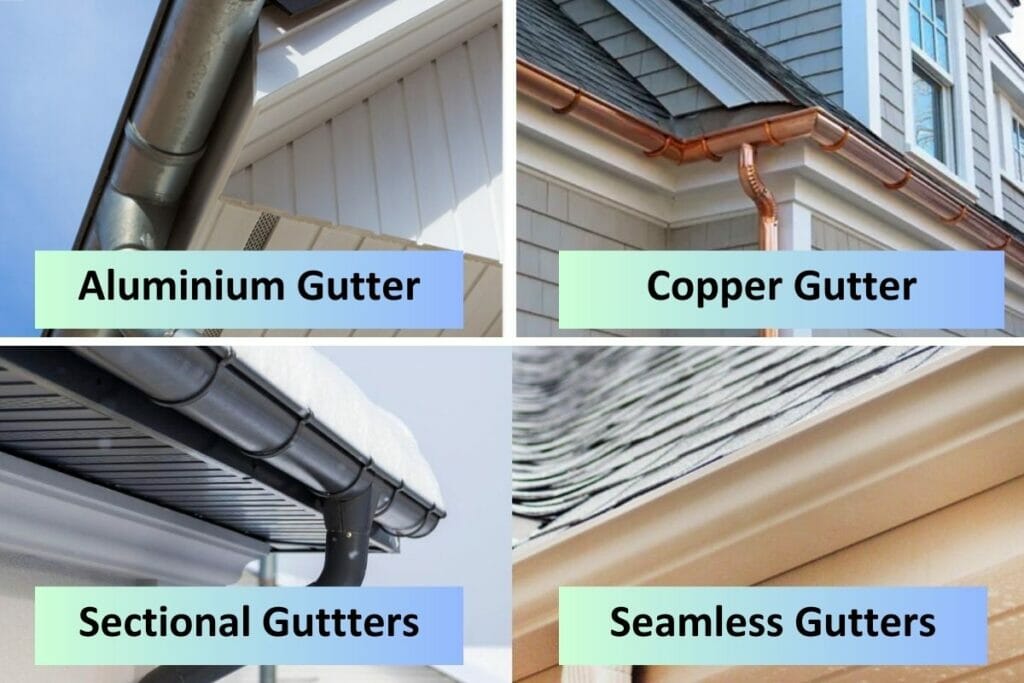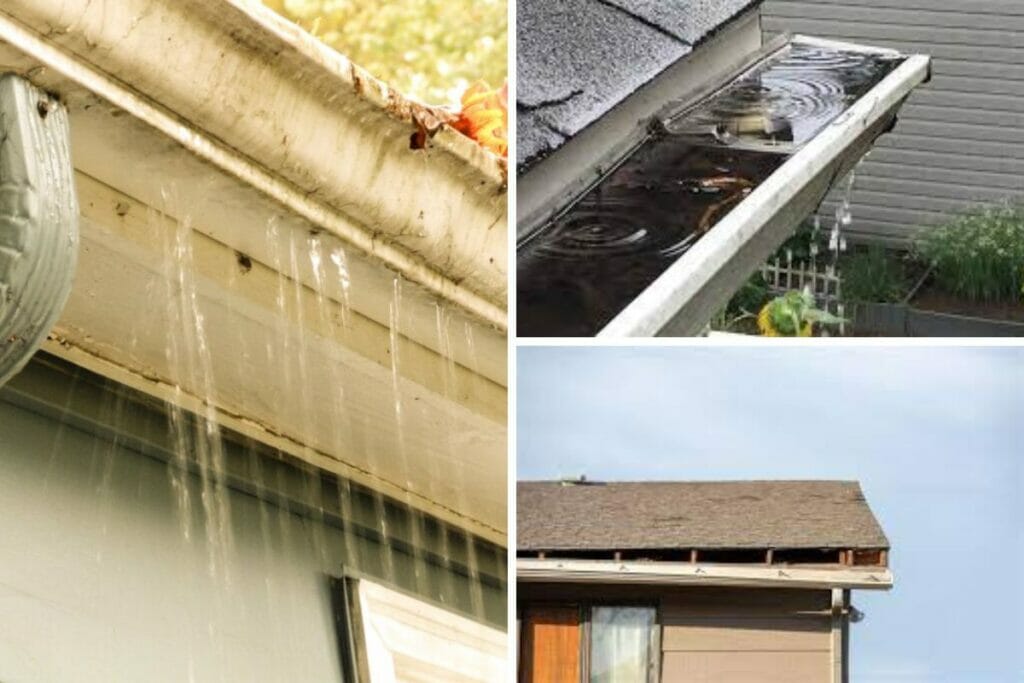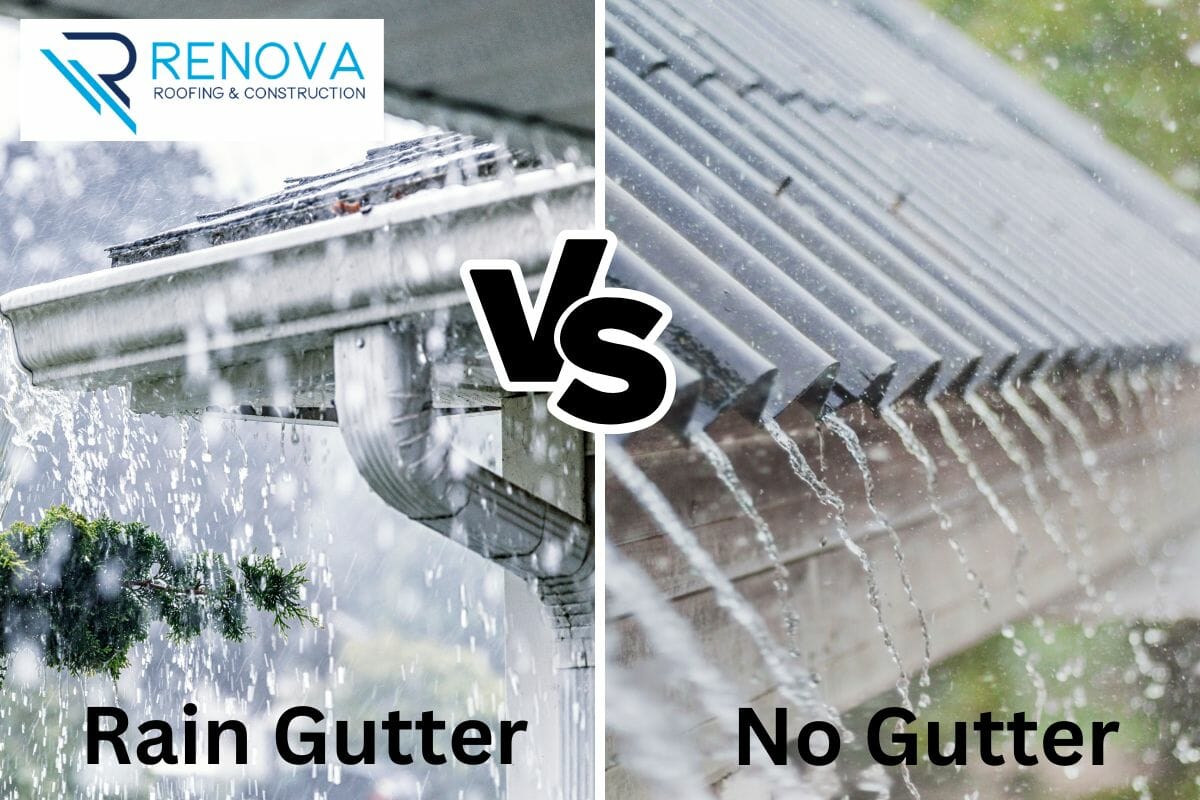Rain gutters may not be the most glamorous feature of a home, but they play a crucial role in protecting your property from water damage. Whether you’re considering installing gutters or wondering if they’re even necessary for your metal building, it’s important to understand why proper water drainage is essential. In this comprehensive guide, we’ll explore the benefits of rain gutters, the potential drawbacks of not having them, and why investing in a gutter system is wise.
What Is The Purpose Of Rain Gutters?
Rain gutters serve a crucial purpose in protecting buildings from water damage. Their primary function is to redirect rainwater away from vulnerable areas such as walls, windows, and siding, preventing potential structural issues, rot, and mold growth. By collecting and effectively channeling rainwater, gutters help preserve the integrity of a roof by preventing water from pooling and damaging the roofing materials. They also play a vital role in safeguarding the foundation of a home by guiding rainwater away, minimizing the risk of cracks and shifting.
Furthermore, gutters prevent erosion by controlling the flow of water and protect landscaping near the building by preventing excessive water flow that could harm plants and flowers. In summary, rain gutters fulfill the crucial purpose of preventing water damage and erosion, preserving the roof and foundation, and protecting the surrounding landscaping.
Are Rain Gutters Necessary?
Yes, rain gutters are necessary for buildings. Without them, rainwater can accumulate on the roof, leading to leaks and deterioration of roofing materials. By effectively channeling rainwater and controlling its flow, gutters help maintain the integrity of the building, prevent water damage, and ensure the long-term durability of a structure. Lets discuss pros and cons of gutters below:
Cons of Gutter Systems
Like any other part of your home, there are certain drawbacks associated with drainage systems. Even with these minor problems, it is still always better to have gutters installed than avoid them altogether.
- Maintenance: Gutters require regular cleaning and maintenance to prevent clogs from leaves, debris, or ice buildup.
- Cost: The installation and maintenance of gutters can get expensive, including materials, professional services, and repairs.
- Damage Potential: If not properly installed or maintained, gutters can cause water to leak out or overflow, leading to potential damage to the roof, walls, or foundation.
- Aesthetics: Some individuals may find the appearance of gutters to be less visually appealing, as they disrupt the clean lines of a building’s exterior.
- Installation limitations: In certain architectural designs or structures with complex rooflines, installing gutters may be challenging or require custom solutions.
- Dependency on proper installation: Gutters need to be correctly installed with the appropriate slope and positioning to effectively channel water, otherwise, they may not function as intended.
The Drawbacks of Not Installing Gutters
Choosing not to install rain gutters can have several negative consequences. Without gutters, rainwater cascades down the roof and falls directly near the foundation. This excessive flow of water can cause soil erosion, leading to foundation settlement and cracks. Over time, water damage can occur to the exterior walls, causing peeling paint, rotting wood, or even mold growth. Furthermore, the lack of gutters can result in water splashing onto windows and doorways, causing additional maintenance issues.
Types and Materials of Rain Gutters
When considering rain gutters, it’s important to explore different styles to choose the most suitable option for your property. Here are some common types and materials:

1. Sectional Gutters
Sectional gutters are made up of smaller sections that are connected during installation. They are typically made of aluminum or vinyl and are budget-friendly. However, they have more seams, which can potentially lead to leaks over time.
2. Seamless Gutters
Seamless gutters are custom-made to fit the measurements of your property. As the name suggests, they don’t have seams, reducing the chance of leaks. Seamless gutters are often made of aluminum and are known for their durability and longevity.
3. Vinyl Gutters
Vinyl gutters are lightweight, affordable, and easy to install. They are resistant to rust and corrosion, making them suitable for areas with high humidity levels. However, they may not withstand extreme weather conditions as well as other materials.
4. Aluminum Gutters
Aluminum gutters are a popular choice due to their durability, lightweight nature, and resistance to rust. They are available in various colors, allowing homeowners to match them with their exteriors. Additionally, aluminum gutters require minimal maintenance.
5. Copper Gutters
Copper gutters are known for their aesthetic appeal and durability. Over time, they develop a beautiful patina, adding a touch of elegance to the property. While copper gutters are more expensive, they offer longevity and require less maintenance.
Proper Maintenance of Rain Gutters
To ensure the optimal performance of rain gutters, regular maintenance is necessary. Here are a few tips:
- Clean gutters frequently to remove debris, leaves, and dirt
- Check for leaks or any signs of damage and repair them promptly
- Ensure downspouts are clear and free from blockages
- Trim overhanging branches to prevent them from damaging gutters during storms
- Regularly inspect the slope and alignment of gutters to ensure proper water flow
Common Issues with Rain Gutters
Despite their benefits, rain gutters can encounter some common issues. It’s important to be aware of these problems and address them promptly:

1. Clogging and Blockages
Leaves, debris, and bird nests can accumulate in gutters, leading to clogging and blockages. Scheduling regular cleanings and installing gutter guards can help prevent this issue.
If you want to prevent blockages in your gutters and learn more about clogged gutters, check our blog post: 9 Reasons Your Gutters Are Clogged & How To Stop It.
2. Leaks and Rust
Over time, gutters may develop leaks or rust, compromising their functionality. Prompt repairs and regular inspections can prevent further damage.
3. Improper Slope and Alignment
If gutters are not properly aligned or have an incorrect slope, water may not flow efficiently, leading to pooling and overflow. Adjusting the alignment or slope can resolve this issue.
Factors to Consider When Choosing Gutters
When selecting rain gutters for your property, consider the following factors:
1. Local Weather
Different weather patterns require different gutter systems. Areas with heavy rainfall may benefit from larger gutters with a higher capacity to handle water flow. In regions prone to freezing temperatures, selecting materials that are resistant to ice buildup is crucial.
2. Budget and Longevity
Evaluate your budget and consider the long-term cost of the gutter system. While certain materials may have a higher upfront cost, they might offer better longevity and require less maintenance, making them cost-effective in the long run.
3. Maintenance Requirements
Consider the level of maintenance you are willing to commit to. Some gutter materials require regular cleaning and inspections to ensure proper functionality. If you prefer low-maintenance options, seamless gutters or materials like aluminum might be suitable.
4. Aesthetic Appeal
Gutters contribute to the overall appearance of a property. Choose gutters that complement the architectural style and color scheme of your building, enhancing its curb appeal.
5. Installation Process
The installation process and complexity vary depending on the type of gutters chosen. While some gutters can be installed as a DIY project, others might require professional assistance. Evaluate your skills and resources before making a decision.
Choosing the Right Water Drainage Solution
When selecting the ideal water drainage solution for your home, consulting professionals is essential. Remember, whether you opt for rain gutters or explore innovative alternatives, proper water drainage is a critical investment in the longevity and protection of your home.
The anatomy of your roof plays a significant role in determining the optimal placement and design of gutters. Our experts at Renova Roofing & Construction are well-versed in the intricacies of roof anatomy, ensuring that your gutter system is tailored to the specific structure of your roof structure. With our expertise in gutter installation and maintenance, we ensure that your gutter system functions effectively, providing the necessary protection against water damage. Contact us today at (601) 647-3433 to discuss your gutter needs and schedule a consultation.
FAQs
A. While it is possible to manage water drainage without gutters, it is less effective and can lead to various issues, such as soil erosion, basement flooding, and damage to the home’s foundation and exterior.
A. Rain gutters collect rainwater and channel it away from the foundation, preventing soil erosion and potential foundation damage.
A. To maintain optimal water flow, gutters require regular maintenance, including cleaning out debris and ensuring they are free from clogs.
A. Rain gutters can be installed on most types of roofs, including sloped, flat, and metal roofs.
A. Gutters should be cleaned at least twice a year, usually in the spring and fall, to remove leaves, twigs, and other debris which can block water flow.
A. While DIY installation is possible, hiring a professional is recommended to ensure a proper installation and address any specific requirements of your home.
A. The lifespan of rain gutters can vary depending on the material and maintenance, but well-kept gutters can last for several decades.

